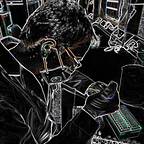Indian Rāgas 101: Musical modes and their counterparts
Once we have glossed over the bare rudiments of few Raags, it is now time we review the musical ‘modes’ and look for their evolutionary counterparts.
‘Modes’ are roughly equivalent to ‘thaat’s of Indian classical music, in the sense that they are all heptatonic, with a combination of shuddha and komal notes, although the Western notation doesn’t often clarify this point. The ‘modes’ have been handed over from Greeks, which reflects in their names (Ionia, Lydia, Doria are all Greek provinces), but have been significantly altered in the middle ages to snuggly fit the piano.
“The musical modes differ essentially from one another, and those who hear them are differently affected by each. Some of them make men sad and grave, like the so called Mixolydian; others enfeeble the mind, like the relaxed modes; another, again, produces a moderate or settled temper, which appears to be the peculiar effect of the Dorian; and the Phrygian inspires enthusiasm.”
‘Politics’, Aristotle (https://www.newworldencyclopedia.org/entry/Musical_mode)
‘Modes’ can be played on a piano quite easily, with all consecutive white keys, provided you start from the right place. For example, the Ionian mode starts from C, and continues on with the white keys
To play the Dorian mode from ‘C’ you need to juggle through white and black; however, if you choose ‘D’ as starting point, it’s all white keys again
Ionian mode
The combination
C D E F G A Bor, simply
S R G M P D N S`Is the Ionian mode, also called the Bilawal thaat. It is all shuddha notes up and down, and is the canonical natural major scale.
Dorian mode
D E F G A B Cor
S R g M P D n S`is the ‘Kaafi’ thaat, and almost similar to the natural minor scale, except that the ‘Dha’ is shuddha.
Phrygian mode
E F G A B C Dis the same as
S r g M P d n S`This is just Bhairavi thaat, which is also very similar to the natural minor scale except that ‘Re’ is komal.
Lydian mode
F G A B C D Eor
S R G m P D N S`The inclusion of the teevra ‘Ma’ (also called the tritone/ augmented 4th) makes this the Kalyaan thaat, making it ever slightly different from natural major scale/ Bilawal/ Ionian.
Mixolydian mode
G A B C D E For
S R G M P D n SThe single komal ‘Ni’ (minor seventh) gives this a delicate flavour, the same as Khambaaj thaat.
Aeolian mode
A B C D E F Gor
S R g M P d n S`is just the natural minor scale, or Asavri thaat.
Locrian mode
This is an oddball
B C D E F G Aor
S r g M m d n SIt has all komal Re, Ga, Dha, Ni and both shuddha and teevra Ma (diminished fifth/ augmented 4th). The use of consecutive half notes (shuddha ‘M’ and teevra ‘m’) has no Indian equivalents.
You can explore the modes at https://learningmusic.ableton.com/advanced-topics/modes.html. Modes represent no particular Raag, but a thaat, which is a framework for composing Raags. I’ll make recurring use of modes in forthcoming posts.
